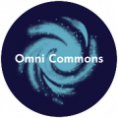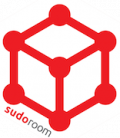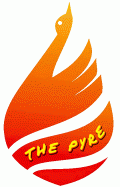|
|
Among technologists, for whom information and communication flow at hyper-speed and social bonds are increasingly interest-based, developing relationships with people and communities outside of your comfort zone of easy compatibility can feel frustratingly slow. The world of software development does not typically attend to the kind of bottom-up, community-based research process I’m accustomed to as an anthropologist – rather, rapid iteration is prized over emergent design and humans (who have a tendency to wield tools in unexpected and surprising ways) are reconfigured as ‘users’ of software that provides a ‘service.’ What follows is an attempt to articulate the process of doing anthropological research for developing technological tools, in the hopes of inspiring technologists to rethink the process of software development in a more human, culturally accountable manner.
Ethnographic research is the art and science of becoming attuned to the cadence of a culture. Largely, this entails the anthropologist’s direct engagement in a cultural milieu, the everyday observations of which are recorded as field notes. Field notes based on the anthropologist’s observations are accompanied by semi-structured interviews (typically recorded, transcribed, and coded) and occasionally surveys to incorporate the variety of roles, activities and perspectives that make up the cultural phenomena under study. An ethnography tells the story of a cultural group – incorporating field notes, interviews, historical research and critical analysis – and is the product of field research that relies on participant-observation as the principal methodological approach. Recent developments in the field of anthropology explore and experiment with new techniques for writing the ‘other’ that often entail treating the self as an other, first and foremost. Reflexivity is crucial for engaging in critical thinking about one’s own role and bias in cultivating cross-cultural understanding.
Multiple methods of analysis are employed in order to understand the complex dynamics of building technological tools for communities from the ground up. Semi-structured interviews are a primary source of the data and information gathered in the process of building tools responsive to community needs. Personal interviews allow community members to voice their opinions and share their biographies in a safe space of confidentiality and empathic listening, while group interviews encourage collaborative storytelling about the community’s origins and history, present issues and projects, and reveal collective visions and goals (as well as anxieties and fears). Focused discussions with community members are also a primary planning and implementation space, including sit-down brainstorming sessions aimed at raising issues and needs that could be addressed by the project.
Of further relevance is what’s known as Community-Based Participatory Action Research. Community-based participatory action research is a methodology that reorients authority horizontally. That is to say, the final product of community-based research is designed to facilitate alliances between local organizations that have vested interests in the community under study, rather than research designed to fulfill an institutional, governmental or corporate agenda. As such, community-based research tends to blend academic and activist agendas, ultimately producing something of value to the research “subjects” that is at once collaborative and politicized.
Always a fan of mixed methods, I’ve been working with the Open Oakland Digital Divide group to reach out to organizations that are already addressing access to technology in Oakland. Rather than reinventing the wheel, we thought it prudent to endeavor toward creating a hub of existing efforts by researching and documenting them on OaklandWiki. Providing such a service ideally demonstrates to the groups we’re reaching out to that we respect and appreciate the work they’ve been doing, enabling us to more effectively request their time for visiting and asking questions about what they need that we could potentially provide. It furthermore creates an opportunity for us to serve as bridges, building a coalition of those committed to addressing the digital divide by making them visible to each other.
The purpose of this post was not in any way intended to condemn the culture of open source communities. The collaborative research process of the Digital Divide group embodies the DIWO (Do It With Others) ethos that I so dearly adore about hacker culture – though it’s doubtful that many members of the group self-identify as hackers. Tidepools, the open source neighborhood mapping project I’ve been working on, was developed under the direct input of the Red Hook community through a unique hybridization of technological development rooted in ethnographic process. I’ve become ever more passionate about the intersections between cultures, the power and potential of fusing worlds. That excitement and fervor has found me racing between spaces, places, communities and meetings – constantly in action, constantly iterating an idea into refinement without allowing it to grow. Borrowing from the best of both open source culture and anthropology, I’m committing this blog to being a living testimony to transparent documentation, reflexivity and critical thinking – but for that to happen, I have to learn to slow down and allow thought to crystallize into language. Here’s to slow dev! 😉
 Narcissus captivated by his own reflection in the pond. Narcissus, a Greek god, spurned the advances of the goddess Echo (or so one version of the story goes). As she faded away in a lonely spot, her final whispery prayers for vengeance were overheard by the goddess Nemesis. As punishment, Narcissus was doomed to fall in love with his own reflection. Pining for his own image in a pool of water, he died and changed into the flower that would come to be called narcissus.
I recently realized that I have all but completely shifted my writing online, into the public domain. Why bother to hold onto those random musings and discoveries when you can tweet them, and not care who’s listening?
I feel something like a civic responsibility. Or perhaps it could be captioned: “Subversivity and Adversity: Fuck!Shit! Oh Woe Is Me.” It is conversation that is key, dialogues that enable challenges to the American ideology of individualism that has long blinded us to the power of empathy, listening, and cultural sensitivity:
Raul Castro, the President of Cuba, recently met with US lawmakers and called for direct negotiations. The meeting revealed to the Americans an earnest desire for dialogue:
”There is no need to emphasize what Cuba has always said: We do not fear dialogue with the United States,” he wrote. ”Nor do we need confrontation to exist, as some foolish people think. We exist precisely because we believe in our ideas and we have never feared dialogue with the adversary.”
Also this past week, a San Francisco Bay Area event for Burners dubbed “Go Native!” was canceled in the face of virulent furor by Native Americans across the country. The East Bay Express reports:
The strange saga all began in early February when Visionary Village — a loose group of artists and other young people who enjoy the annual Burning Man arts festival in Nevada — began routine publicity for a Burning Man-style “private event” at the Bordello on E. 12 Street in Oakland. The online flyer circulated on Tribe.net read: “GO NATIVE” in an Old West font set against a desert sun, and the dance party was advertised as a “fundraiser for the Native American Church.” Native-rights activists got wind of it and publicized additional text from the VisionaryVillage.org web site indicating four “elemental rooms” would be themed: “Water: Island Natives (Maori); Air: Cliff Natives (Anasazi); Earth: Jungle Natives (Shipibo); Fire: Desert Natives (Pueblo).” Ravers were offered a discount off the $20 door fee “if you show up in Native costume,” and the money would fund “neurofeedback research demonstrating causality between medicinal use [of peyote], improved brainwave patterns, and heightened mirror neuron activity in users.” The 140-year-old Bordello property abuts Interstate 880 and an ancient Ohlone Indian site dated to the 12th century B.C., which was also promoted.
The Visionary Village leaders quickly complied with the Native Americans’ demand for cancellation and request for dialogue. It was to be a lesson in effective conflict resolution, though certainly tensions remain: On the night of the event, a handful of Burners were lectured to for four hours on the importance of cultural sensitivity, appropriation, and outright theft. The Burners were apologetic and conciliatory and willing to bridge the rifts between their cultures.
But, still – robbed of one’s culture twice over. Blindly reproducing the hierarchies we’d once imposed in another iteration- one more ignorant, autosexual, narcissistic-
“Power is not caring who’s listening,” a quote from Bernie Hogan that found its way to my Twitter feed (and certainly applies to Twitter)- but it is also caring who’s listening! Not necessarily in the paranoid, conspiratorial sense (though sometimes they really are out to get you), but rather in the empathetic sense. The knife is a technology that can be used to cut food, or used to cut people. Beware of spending too much time in front of the mirror: In search of strokes we become addicts blindly drawn to the glow. There are so many DIFFERENT kinds of people, paradigms, possibilities just beyond the realm of comfort and habit, yet we continue to be drawn to that which confirms and reaffirms what we already know.
The medium is the message: a television show may compress time and space in such a way as to provide a limited, inauthentic experience; conversely, it could play with time and space in a wiggly manner. Perhaps this explains my wholesale absorption by television involving time travel (Heroes and Lost, specifically), or shows that sweep me into laughter to such a hilarious extent that i forget to fret on what’s been done or what’s to come ahead.
To escape the self is at once ecstatic and terrifying. Victor Turner suggests that “liminality is frequently likened to death, to being in the womb, to invisibility, to darkness, to bisexuality, to the wilderness, and to an eclipse of the sun or moon” (1986: 95). Drawn in to the present reality, which always exists between fixed points, we are freed from these imagined divisions between nature and culture, self and other, past and future.
It is in providing outward display for things and pathways as they exist within the horizons of landscape that places enable memories to become inwardly inscribed and possessed: made one with the memorial self. The visibility without becomes part of the invisibility within.
-Edward Casey, Remembering: A Phenomenological Study, 1987
The medium is the message: erasure of the glow, as all journeys exist in the mind alone. There are so many stories to be told, connections to be made, and so many possible paths for the telling, paths as yet unexplored.
Better to be a pansexual than an autosexual, to be weaving whimsical loops within the whole.
In an effort to meet the educational needs of its considerable population (550 million and growing), researchers and computer scientists in India have designed a laptop that costs $20 per unit (expected to fall). This model vastly undercuts the much-hyped (but decidedly problematized) $100 laptop designed by researchers at MIT.
The secretary of secondary and higher education, R.P. Agrawal, expects these laptops to be made commercially available in six months, though no commercial partnership has yet been formed. The design features 2GB of ram and wireless connectivity- barely room for a Linux operating system, let alone the storage of any personal data. As such, all activity through these machines would have to occur on the web, which has some discomforting connotations.
Nevertheless, this is one of the most inspirational bits of news I’ve heard in awhile, even in this most inspirational of times (technologically, politically, and memetically…). I’m hoping this gets supported by some big-time philanthropist, and is spread quickly to the areas of the world that need it most. I think we’ll be needing to develop new platforms and volunteers in the area of distance learning. Open, global universities, like that being envisioned by my new friend and colleague Scott MacLeod- though I far prefer wikis to the heavy load of virtual worlds like Second Life.
The catch, of course, is participation. How to encourage participation? Wikipedia is a great model, but it’s also an anomaly in the world of wikis. Or maybe I’m just dejected about the fact that the bulk of my new wiki, Webnographers, is likely to continue being edited by me and me alone. Clearly, there is a need for more educational jobs through e-learning- and the more educators we get online, the better off we’ll be. Some financial incentive, O-bama?
Of course, India clearly prioritizes advancing technology over acquiring international educators, and as the US increasingly outsources tech jobs to India, this news comes as a quixotic quagmire.
All the things that this blog is about, that my research is about, are beginning to be truly realized in the work of my friends at Future Folk Records. Let’s just say that, for my friend Rod, unemployment + immense creativity & talent + love = this website, where you can find tons of awesome (free) music, media, and art.
Their ideology? As stated on their site:
What is Future Folk Music?
Folk music is the music people make in their own homes, with their own limited resources, for themselves and the people around them. It is the music people use to define their identities, whatever those identities may be. Folk music is the music of community.
The future is now. Cliché as it may sound, technology now makes it possible for networks of likeminded individuals the world over to connect as easily as if they lived in the same neighborhood. Countless numbers of people the world over are now all a part of the same community.
This is the ideology that fuels Future Folk Records. We believe that art is too important to be treated as a commodity. If you want to hear our music, take it. It’s yours. We only hope it provides you with a fraction of the joy and fulfillment it has given us.
If you are an artist of any medium who would like a place in the Future Folk Records community, we encourage you to contact us at: futurefolkrecords@gmail.com.
A snippet:
i <3 future folk records
Perhaps it’s but a personality trait, but I find myself decidedly undecided, residing in a constant state of indecision. For better or worse, I turn to the steady hum of the interweb for inspiration. Going out to dinner entails a lengthy perusal of online reviews (three cheers for yelp!). My life decisions, beginning most memorably with the college search since the advent of high school, are group decisions. This is not to say people have not always been composed of their collective interactions (read: culture), but that this process is occurring in new ways that have yet to be understood and categorically ordered into consciousness.
For as much as we are conduits of culture, we are also its composers. Being as it is the dawn of a new era of mediated communication, we are in prime position to create new memes for future generations. This is imperative, for as anyone tapped into the collective neural net knows (and that’s everybody, to varying forms and degrees), the world is in a deep malaise that, while it may never be undone, must be remade. Degunk the junk and foster the funk.
Through the mirror, darkly sinister forms abound. The websites I have been researching glamorize “stupid spoiled whores,” revel in misanthropy, and celebrate self-mutilation. This is the ugly underbelly of a jaded generation, saturated with the soulless machine of a media industry gone mad. Eventually, one would imagine, we will reach satiation and revolt against this funhouse mirror of our society. That is to say, we may and must remake the mirror.
Here we stand, poised at the precipice of a new era of information flow. The simple existence of these websites is telling: with the ever-evolving tools of the interweb, the ever-increasing population of the digitized can join the conversation. Little surprise it is that we converse online in the same way we converse offline: we gossip about others, consume media and talk about it, create representations of ourselves through performative acts, confess our darkest secrets and innermost longings in the sanctuary of like-minded others…
And, like in life, some clamber for soapboxes where they may espouse prolifically to a mostly unseen (but potentially vast) audience, while many lurk about, not wishing to be heard but willing to absorb. Though most of us be sheep, theories regarding the wisdom of the crowd contend that diluting and diversifying such a crowd will increase the chances of its survival.
In order to survive, we need to be critical producers of alternative points of view. This post was originally inspired by the research I’m conducting on pro-self harm websites; having sussed out the black-and-white, the extremes, I’ve moved on to the nuanced middle ground. In this space that is neither supportive of self-destruction nor condemning of such a perspective, there are emerging voices that seek to not only reflexively examine the issue as it stands, but to redefine the very definition of “pro-self harm.” Not supportive of the disordered habits that are the coping mechanisms for our culture, but supportive of those who are clearly in need of support most of all. Effective support entails not only empathy and understanding, but strong voices (herders, if you will) with the capacity to critique our disorderly conduct and call new memes into being. So clamber on up, to the top of the search results, redefine the folksonomy, and remake that mirror (repetition numero tres).
Consider this a call to action.
Some inspiration:
mamaVISION: Highly controversial (read: popular) personal blog of a 30-something ex-model turned mother, dedicated to spreading awareness of our eating disordered society and empathetically communicating with the sufferers themselves.
We Bite Back: Post-pro-ana – Postmodernizing the discussion of eating disorders and encouraging recovery.
Suicide: Read This First: Another form of “pro-suicide”- offering empathetic understanding and resources.
Self-Injury: A Struggle: Longstanding site devoted to spreading awareness and cultivating a community of support for self-injurers, created by a fellow self-injurer.
For those of you who think “Facebook Activism” is only good for whining about the company’s latest invasions of your privacy, or expressing support for Stephen Colbert’s “presidential race,” check it:
Over 270,000 Facebook members, mostly Central American youths, have joined a group called “One Million Voices Against FARC,” which was established one month ago. The group leaders organized a rally, using Facebook as a means to gather support both within Columbia as well as globally. This past Monday, between 500,000 and 2 million Columbians marched in the streets, with thousands joining them in over 133 countries worldwide.
FARC, which in English stands for the Revolutionary Armed Forces of Columbia-People’s Army, considers itself to be a guerilla movement for Columbian communism. Most of the rest of the world, including Columbia, prefers the term “terrorist organization”. The movement is specifically geared toward halting the ubiquitous kidnapping tactics employed by FARC, claiming that thousands have been wrongly imprisoned by the group for over a decade.
Nevertheless, some Columbians feel that the movement may serve only to polarize the country. Though they acknowledge the importance of standing up to unethical practices such as kidnapping, protesting FARC itself is a bit more nuanced. From The Christian Science Monitor:
“While few Colombians support the Marxist insurgent army that has been fighting the Colombian state for more than 40 years, many people are uncomfortable with the message of Monday’s rally. They would prefer a broader slogan against kidnapping and in favor of peace and of negotiations between the government and the rebels to exchange hostages for jailed rebels. The leftist Polo Democratico Party said it will hold a rally in Bogotá in favor of a negotiation but would not march. Some senators say they will march against Venezuelan President Hugo Chávez, and other participants say they will be marching in favor of Colombian President Alvaro Uribe.”
The group’s discussion board is probably the best insight into the myriad issues and sentiments the struggle evokes amongst Central and South American youth, reflecting struggles against racism, classism, and corrupt governments. Thanks to Claire-bear for keeping her finger on the pulse of Free Speech Radio!
The character of mass media has been shifting dramatically over the past century- from the one-directional consumption of television, to the dialogical (yet niche) nature of online bulletin boards, to the enormous multimedia production of today. As the tools of new media increase in accessibility and expand in ubiquity, we find ourselves in conversation with a public audience that is more or less evident.
Knowing who one’s audience is can be a tricky process. Blogs, websites, and publicly-accessible online profiles entail invisible publics. The creation of Friend Lists and the implementation of privacy features restricts one’s audience and enhances awareness of it. Through the lens of the social graph, we can create categorical definitions of our audiences by labeling clusters of relations.
(From the looks of it, it would appear that my social network revolves around the following sites: Wesleyan, Boston, NY, San Francisco, Washington D.C, and the Northwest US):

There is something intrinsically satisfying in visual representation that text lacks. There are also few things more desirable than that which reflects oneself, however iconically.
TouchGraph, the company behind this Facebook application, says on their website:
“Traditional search engines provide a way to sift through this data. However, the greatest insights can be achieved not by sifting, but by looking at the big picture to see how items are connected.”
Just the name of the company- TouchGraph, beckons us outside of the textuality of the Internet (a quality that is becoming progressively less prominent), allowing us to grasp our wider place in the virtual world on a more intuitive level.
Such data also allows us to understand exactly how limited our individual, direct scope actually is. I predict that the practice of mirroring real-life social networks will soon become secondary to the process of producing engaging media- which, as the Internet becomes increasingly searchable, will find its place amongst wider taste fabrics. These “taste fabrics” are constructed through “word of mouth” reconfigured to the modern sense- that is, hyperlinked. In turn we may find ourselves navigating visual representations of the taste fabrics we create through our Google searches, our social networks, and our own content.
Emancipation from the material bases of inverted truth this is what the self-emancipation of our epoch consists of. This “historical mission of installing truth in the world” cannot be accomplished either by the isolated individual, or by the atomized crowd subjected to manipulation, but now as ever by the class which is able to effect the dissolution of all classes by bringing all power into the dealienating form of realized democracy, the Council, in which practical theory controls itself and sees its own action. This is possible only where individuals are “directly linked to universal history”; only where dialogue arms itself to make its own conditions victorious.
-Guy Debord
I have been thinking of online social networks as pertinent examples of a generational trend, marked by the increasing appropriation of the media and proliferation of contextualized interpretations by disparate individuals, connected through shared taste fabrics that are founded, by and large, on mass media. The rise of Web 2.0 signifies a shift toward user-generated content in the form of blogs, photo albums, videos, music, niche communities, message board dialogue, playful interaction, computer media, and creative displays of identity (“mashup”).
The locale of the hearth (that which is safe, secure) has shifted, from the family home theater clustered around the television to a dynamic mirror of ourselves as relational wholes, albeit individually fragmented. We have begun to bridge the gap between producers and consumers of media- increasing interactivity allows for a two-way dialogue as opposed to the directional nature of mass media.
However, all is not oral. New media is rather a hybrid of oral and written language- at once casual yet permanent, private yet public, intimate yet mediated. We are creating the media, but must not forgot the role of the media in inculcating our understandings of reality.
Last week, I blazed a testy tirade objecting to what I saw as the haughty condescension of one of my favorite psytrance party promoters (here I am referring to all-night electronic music dance parties of the post-hippie variety). The bulletin I replied to proclaimed that the vast majority of psytrance made in 2007 was crap, with the exception being, of course, the EPs they themselves released. There were also claims to the very depths of the “underground”- coming from people seeking to capitalize on selling the notion (and all the apparel, albums, and $20 tickets that come with it). While the scene is indeed “underground,” no scene ever remains there once money and “quality control” become the mantras of those throwing the parties.
Pointing the way to quality music is one thing, and indeed these cats rightly earn the title of “experts” of this particular genre of music. However, when said “experts” begin to propagate exclusivity and ridicule the efforts of well-meaning, passionate new producers of the very content we rely on experts to help us discover, they take on the form of the lowly critic. “To define is to kill, to suggest is to create,” wrote French poet Stephane Mallarme. To define a genre through criticism does little other than highlight pretension and shatter the confidence of the artists who, particularly in this field, create out of love and thrive off of support by others.
I would know; I’m friends with more than a few such musicians and producers. The critics destroy an unconfident new artist; what keeps any anyone going is inspiration, in its myriad forms. The energized dancing of the partygoers, the feeling of synergetic zen, the comment of a fan on MySpace, the spark of appreciation in the eyes of a hard-to-please friend. To say, “that, there, that was excellent!” in the midst of a frenzied crescendo will propel one to seek that moment again and again. My high school English teacher is my greatest hero, as she lauded me with such praise and support of my writing (“that, there, that was good!” that I began to write furiously, fueled by the twin fires of confidence and passion. that I began to write furiously, fueled by the twin fires of confidence and passion.
By all means, I fully support relying on experts’ opinions to guide us toward quality music, but we are all our own best critics. We would certainly do well to experience, appreciate, and share what we know to be good; better still to spot what could be good and suggest how it could be improved; and finally to simply make what you like to hear yourself, if you’re so picky!
I’ll leave you with the wise words of my favorite poet, e.e. cummings: “I’d rather learn from one bird how to sing, then teach ten thousand stars how not to dance.”
Rosen, a technology journalist, discusses emerging online community practices in terms of a modern-day process she has coined “egocasting”. She documents the recent history of communicative technologies, which allow individuals to control with increasing precision the information they consume. Popular contraptions such as TiVo and the iPod allow individuals the capacity to avoid the sounds, images, and ideas we don’t agree with. She warns of the potential of this power for crafting a culture that is profoundly impatient and critical of all that does not align with their ideologies of choice.
TiVos and iPods will never destroy us. But our romance with technologies of personalization has partially fulfilled Krutch’s prediction. We haven’t become more like machines. We’ve made the machines more like us. In the process we are encouraging the flourishing of some of our less attractive human tendencies: for passive spectacle; for constant, escapist fantasy; for excesses of consumption. These impulses are age-old, of course, but they are now fantastically easy to satisfy. Instead of attending a bear-baiting, we can TiVo the wrestling match. From the remote control to TiVo and iPod, we have crafted technologies that are superbly capable of giving us what we want. Our pleasure at exercising control over what we hear, what we see, and what we read is not intrinsically dangerous. But an unwillingness to recognize the potential excesses of this power—egocasting, fetishization, a vast cultural impatience, and the triumph of individual choice over all critical standards—is perilous indeed.
The parallels to online communities are cutting. Though our culture frequently heralds the globalizing force of technology, there are darker implications that this technology may allow use to blind ourselves entirely to ideas and information that contest our beliefs and challenge our comfortable notions of ourselves, others, and the world at large.
|
|







 that I began to write furiously, fueled by the twin fires of confidence and passion.
that I began to write furiously, fueled by the twin fires of confidence and passion.